The Australian Alps’ colourful alter ego

Every summer the colourful alter ego of the Victoria, New South Wales and Australian Capital Territory alpine regions is revealed.
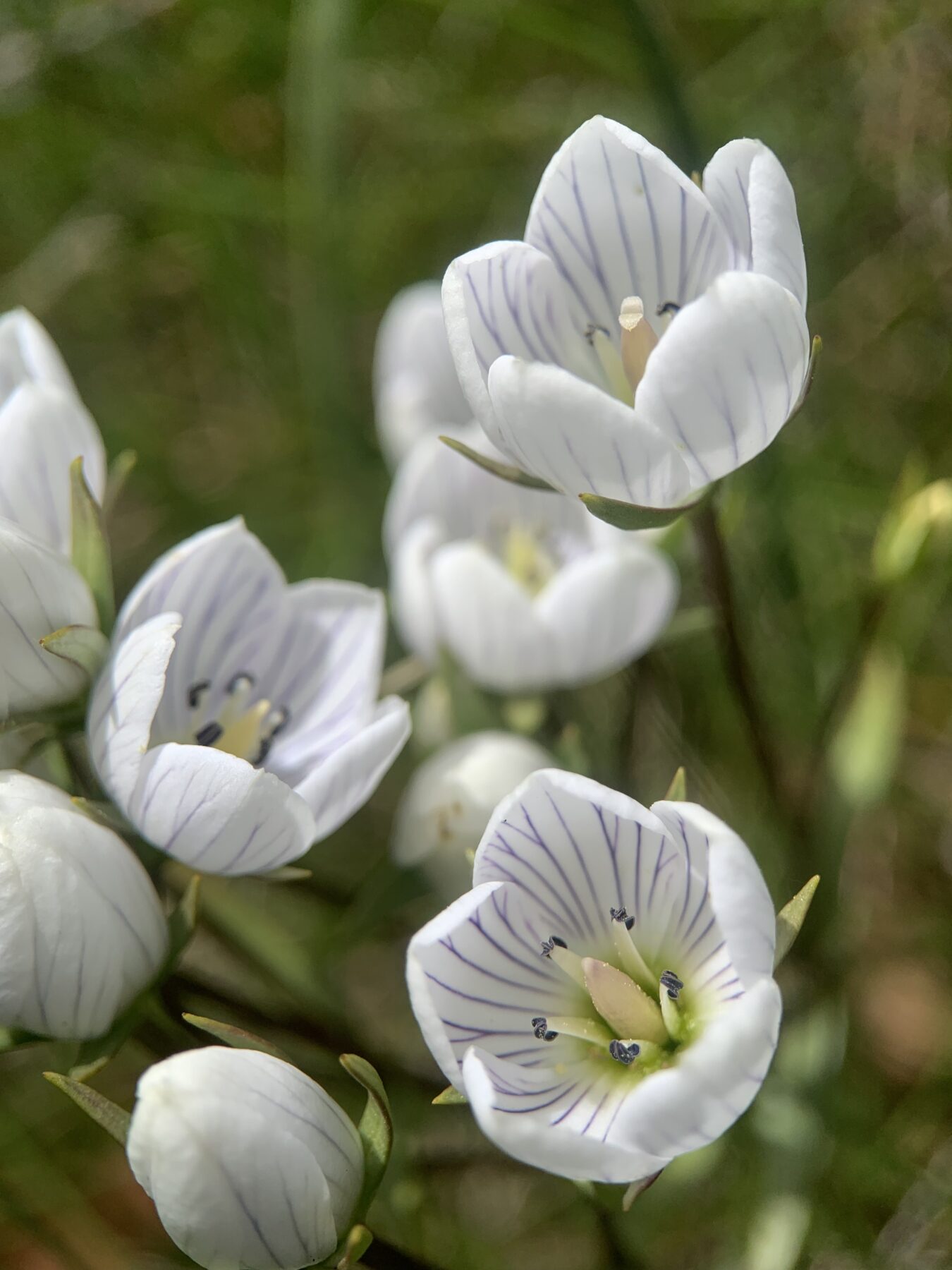
With the famous snow cover long gone, hundreds of wildflower species carpet the ground in its place.
Ironically, some of the white wildflowers grow in such abundance in summer that they can be mistaken for snow, says wildflower and alpine ecology expert Professor Catherine Pickering from Griffith University’s School of Environment and Science in Queensland.
These white flower species include snow daisies (Celmisia spp.) and the alpine gentian (Gentiana spp.), one of Catherine’s favourites. She insists that it’s so stunning it should be on every wildflower enthusiast’s bucket list.
“And if you happen to see hot-pink flowers,” she says, “it’s most likely the grass triggerplant (Stylidium graminifolium).” This flower is particularly distinct, not only for its colour but also for its unusual pollination mechanism.
“It’s fascinating to watch. When a pollinator – usually a fly – lands on the petals, the flower’s column catapults up from under the petals, whacking it on the back,” Catherine says.
Ecosystem essentials
Beyond their beauty, alpine wildflowers are vital to maintaining a healthy ecosystem.
“Alpine wildflowers, grasses, herbs, shrubs and even the mosses are not only beautiful, but these plants also maintain critical water catchments,” Catherine says.
These plants play a key role in protecting alpine soils, preventing erosion that could otherwise degrade waterways and fill up dams. Keeping soils intact produces clean drinking water, more hydroelectric power and supports agriculture downstream.
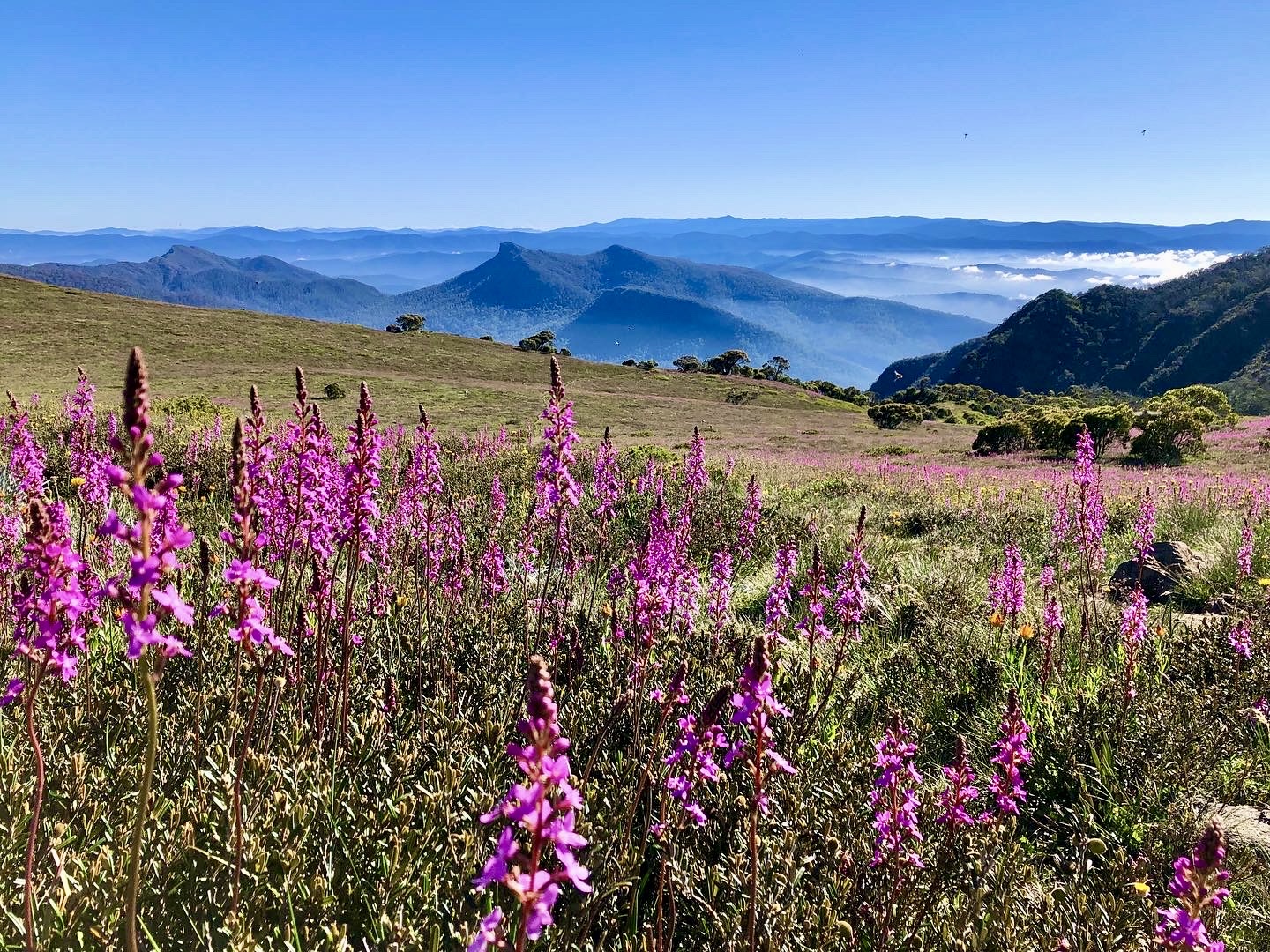
Soil stabilisation is critical in the Australian Alps. But since the 1800s, hard-hoofed feral species have damaged its vegetation, leading to erosion.
“The Australian environment, particularly the alps, isn’t designed for hard-hoofed animals,” Catherine says.
“The plants evolved with soft paws, not hard hooves, and so are easily trampled. It just takes a couple of horses or deer to tear up a bog or rip up a herb field – damage that takes decades to restore.
“I don’t think enough Australians understand just how many critical ecosystem services alpine environments provide and how they benefit both people and nature.”
Soil stabilisers
As well as the ongoing impacts of feral species such as horses and deer, years of cattle grazing have left much of the alpine region significantly damaged. But some native colonising species that thrive in ‘disturbed’ areas play a critical role in restoring these ecosystems and stabilising soils.
Liz MacPhee is an alpine ecologist who has worked with La Trobe University’s Research Centre for Applied Alpine Ecology. She has spent more than 30 years rehabilitating Australia’s alpine ecosystems and says one of the most popular wildflowers, billy buttons (Craspedia spp.),is also an effective coloniser.
“Billy buttons germinate quickly, and their rosette root structure helps stabilise the soil. They produce abundant, viable seeds that the wind can easily distribute, making them excellent for rehabilitation,” Liz says.
Another valuable species is the orange or alpine everlasting (Xerochrysum subundulatum), part of the same family as billy buttons (Asteraceae). According to Liz, this hardy plant can thrive in extreme conditions. “They can cope with heavy frost and snow, gale-force winds and extreme variations in temperature,” she says.
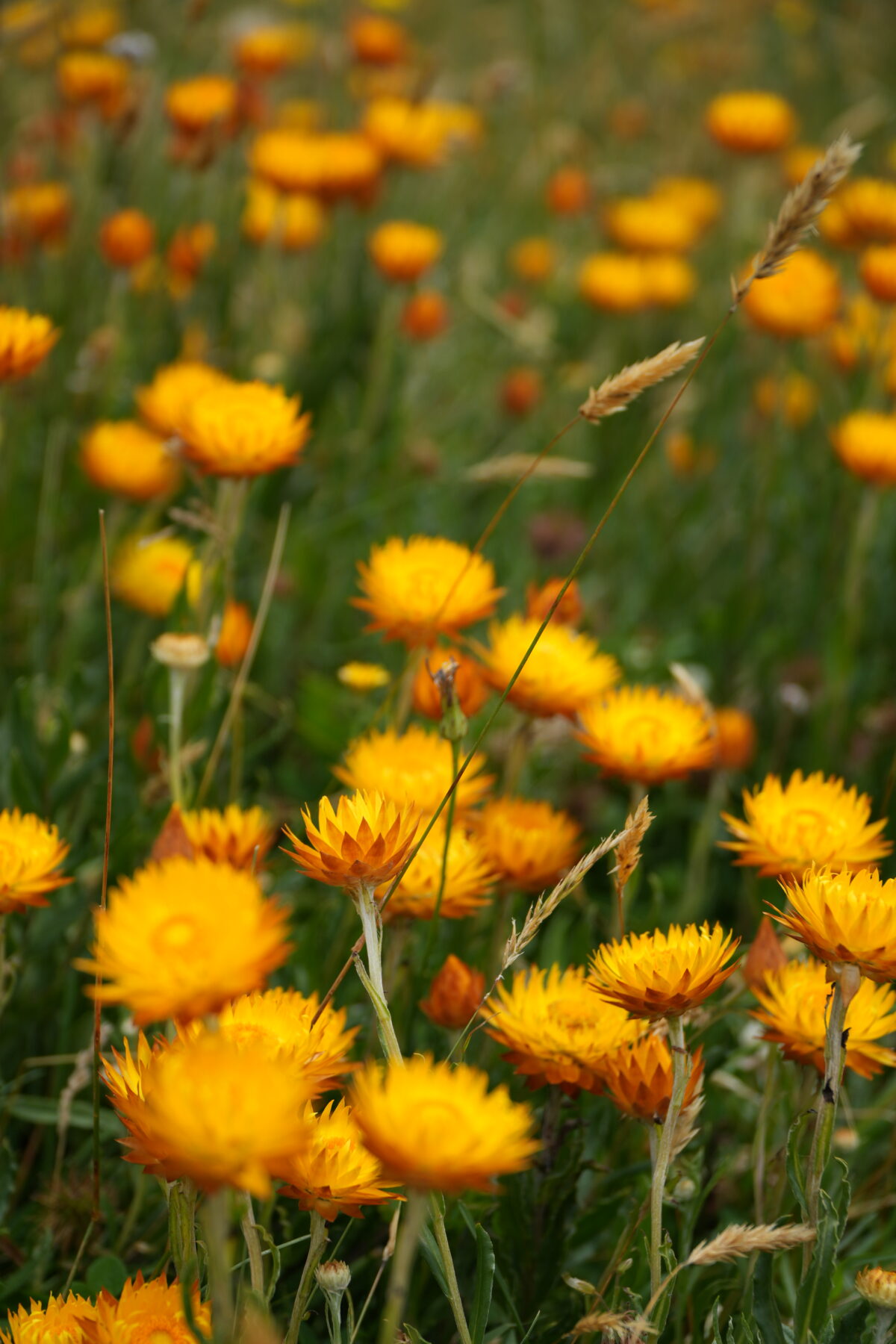
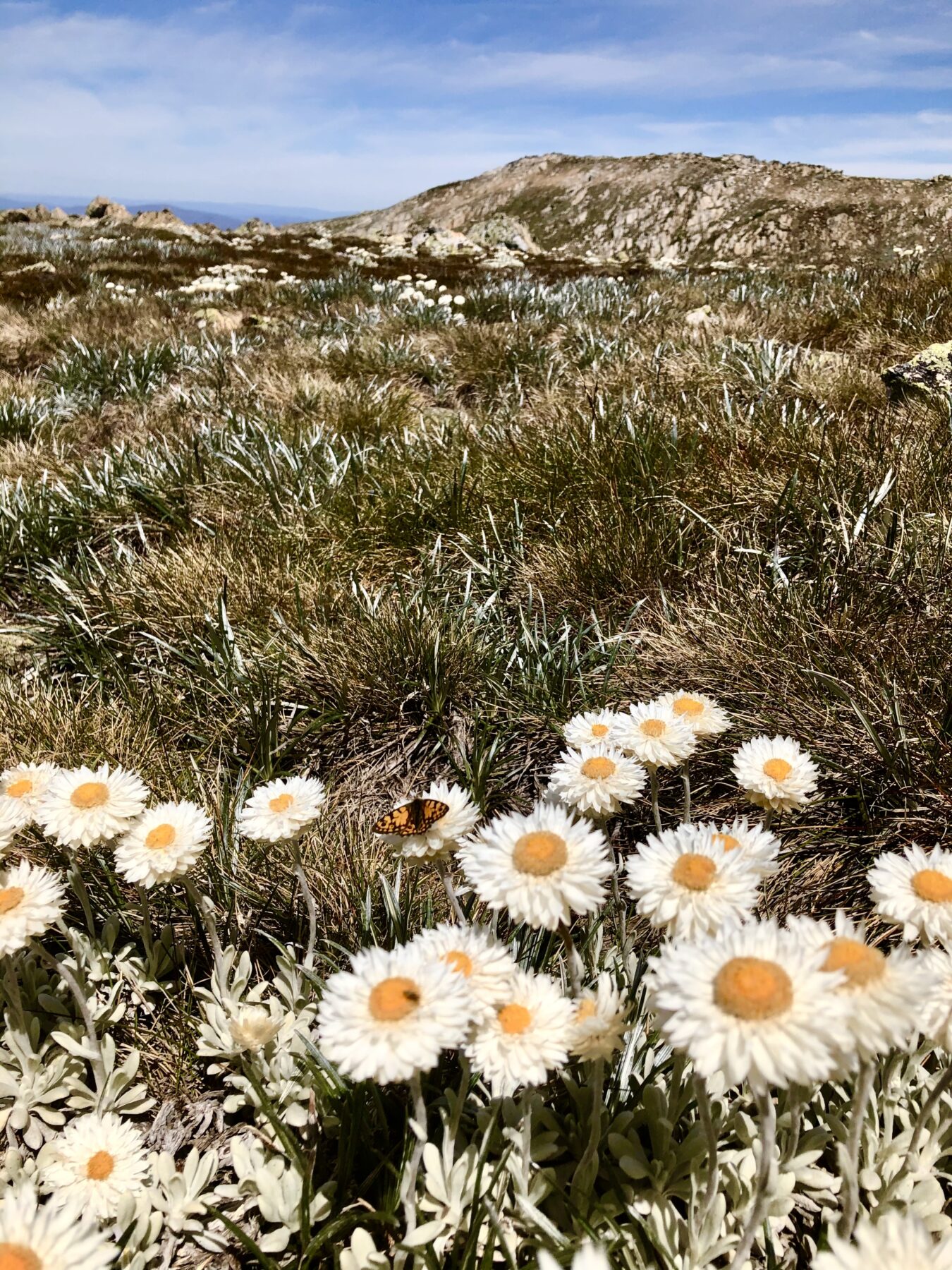
When and where to wander
The alpine wildflower season typically occurs in December and January. But Catherine says the flowering season is beginning earlier into the season due to a decline in snow cover and earlier thaw, driven by a warming climate.
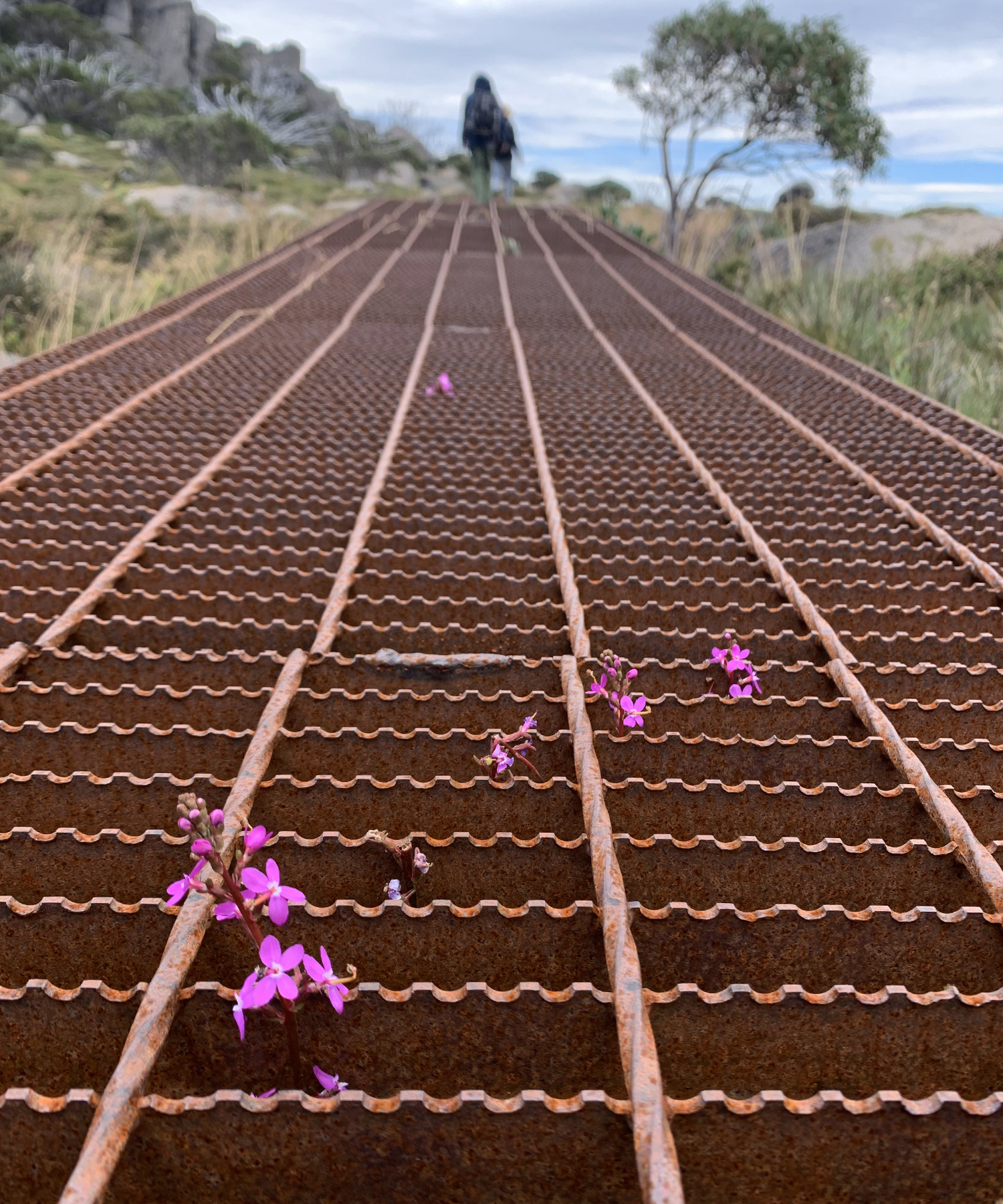
While alpine wildflowers face threats from climate change, invasive species and poor land management, tourism can also have an impact. Poorly designed walking tracks can erode landscapes, create pathways for feral species and introduce invasive plants.
However, the new Snowies Alpine Walk in Kosciuszko National Park has earned Catherine’s praise.
“I was incredibly impressed with the new tracks; they have been installed with enormous care and consideration,” she says. “A lot of the tracks are made with elevated steel mesh boardwalks, which have limited impact on the landscape. Plants can grow through the mesh, and if needed, the tracks can be removed with minimal damage.”
The steel boardwalk design also enhances visitors’ experience in the park.
“Hikers can now explore new parts of the national park with a true sense of remoteness without impacting the environment,” Catherine says. “The subtle layout of the track provides a phenomenal experience of stunning, uninterrupted vistas and great views into the valleys.”
Championing the Alps
Both Catherine and Liz emphasise that the more people who understand and appreciate the importance of our alpine ecosystems, the more momentum there is to protect them. Getting outside and enjoying wildflowers throughout summer is a great place to start.
Catherine also reflects that alpine ecology research has recently regained momentum. “There was a lull in research for a few years, but now the hills are alive with alpine ecologists!” she says.




